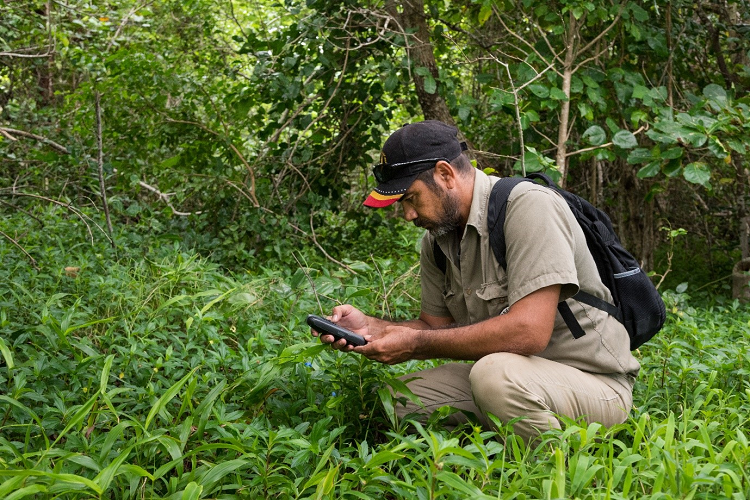Tony Arthur, Fiona Giannini, Barbara Waterhouse, Belinda Barnes and James Walker
Photo: Kerry Trapnell
The Plant Health Surveillance Program, a component of the Northern Australia Quarantine Strategy's (NAQS) biosecurity surveillance operations, conducts surveys across northern Australia with the primary purpose of detecting newly arrived pests, weeds and diseases.
This report applies a new method to help inform allocation of effort for this surveillance.
The method takes into account both the expected return (in this case the expected number of detections of recently established pests), and uncertainty in that return, which could lead to large, undesirable biosecurity outcomes.
To apply the method, estimates for incursion and establishment rates of pests, weeds and diseases are drawn from sources including detection history from past surveys, modelling of wind-borne incursion rates and host data.
This report focuses on small to medium sized locations like towns in Torres Strait, where NAQS typical plant health surveys can cover a relatively high proportion of critical habitat, providing a relatively high likelihood of early detection.
Key findings
- At present the plant health surveillance team typically visits locations on either a yearly basis, every two years, every three years, or at lower frequency, based on risk ratings derived from expert opinion. The work presented here results in broadly similar but more refined suggested allocations of effort. For the smaller locations considered in our work Torres Strait is clearly an area to focus significant effort. However, even within Torres Strait there is scope to consider allocating more effort to some areas than others. Outside Torres Strait our results suggest that the Northern Peninsula Area deserves more attention than all other areas in northern Australia. However, the results should be considered alongside other policy and operational considerations when finalising effort allocation decisions.
- We note that incursions into Darwin occur, with most probably through regulated pathways, but with none detected through NAQS typical plant health surveys to date. Further thought should be given to how large places like Darwin best fit into the northern Australian surveillance system. While targeted surveillance can result in detections, it is not the only method leading to the detection of new threats. Collaborative activities and awareness raising with state and territory governments, plant industries and communities are also likely to be important.
- Compiling data for this work was a major undertaking. Effort (already underway) should be devoted to improving data collection and storage systems, both for plant health surveillance data and to establish a comprehensive and reliable inventory of all plant pest and disease incursions into Australia. It is important that this effort focuses not only on the required infrastructure, but also clearly identities the types of data that would inform future analyses.

